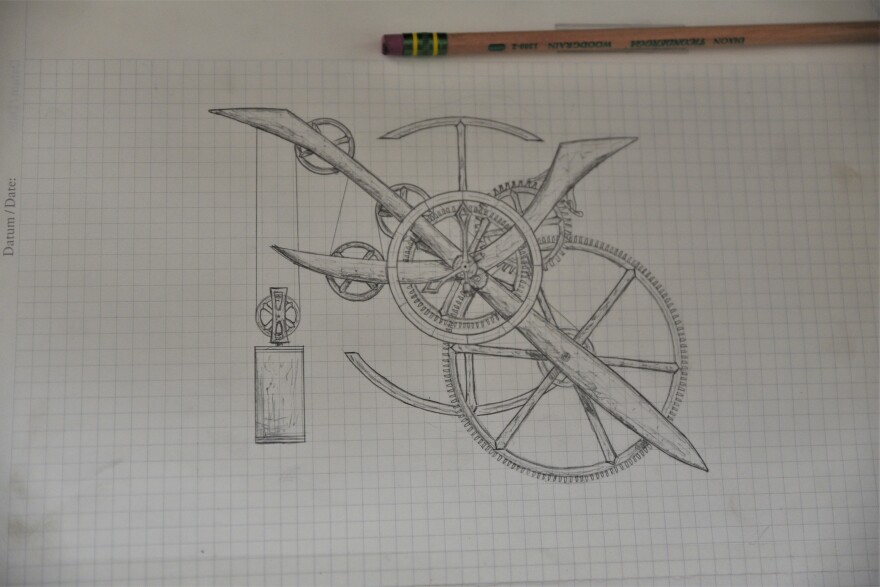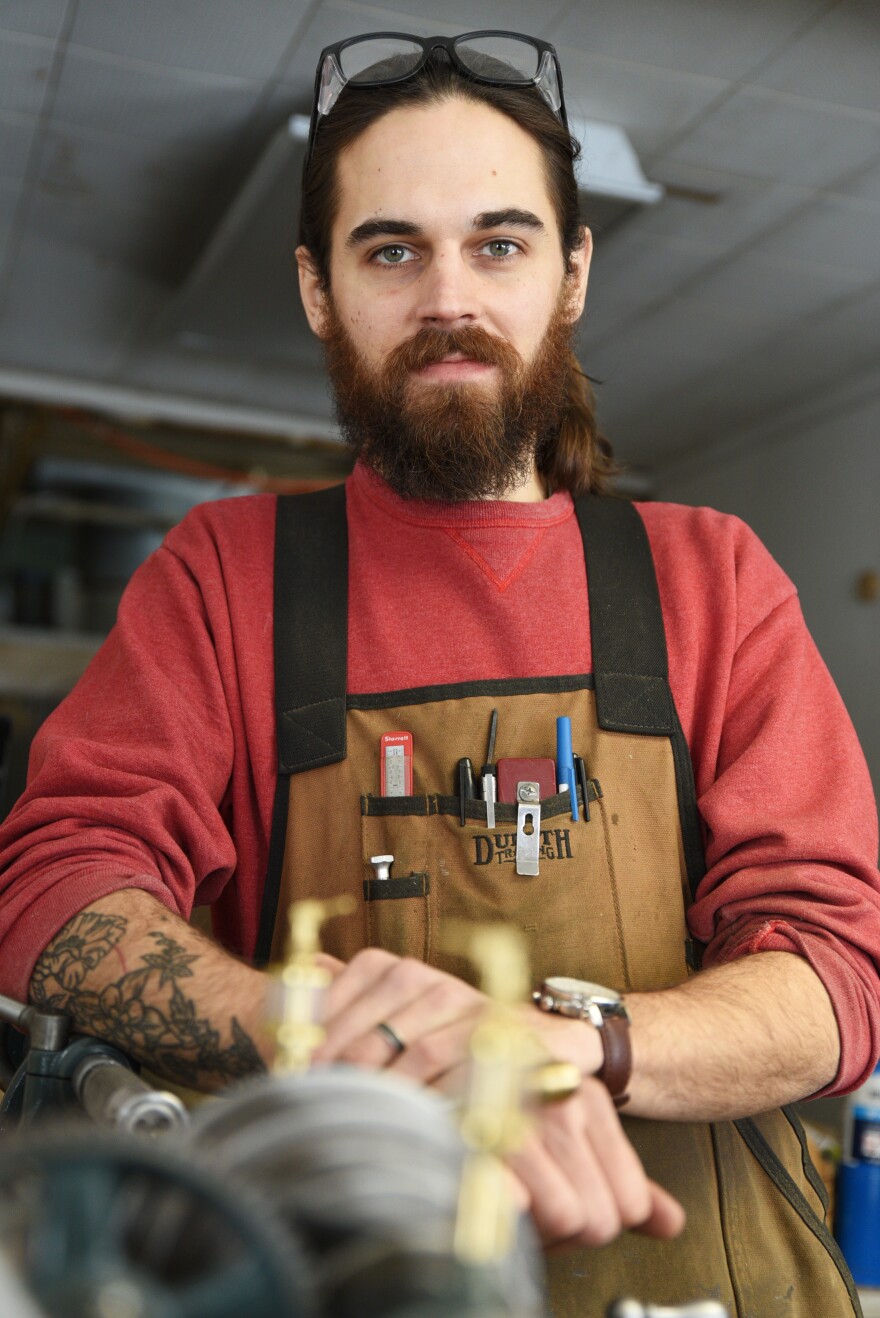
Clockwright's Rick Hale is making clocks unlike any you’ve seen before. It’s a piece of sculpture in motion made of Michigan hardwoods.
RH: “With these clocks, I try to combine two elements: one being curved organic visual shapes that sort of define the general shape of the piece. And that is in tandem with kind of the fine detail the small gear teeth the tiny ticking levers and parts. So it's kind of a combination of those two things.”
LG: “Except for bushings, these gears are made of wood.”
RH: “Exactly. Yeah. It's taken a lot of trial and error to come up with ways to work with wood as a medium and to overcome some of the pitfalls that can crop up with warping and just movement over time. But at this point I'm very confident in my process and in my product.”
Hale shares a workshop with another Artisan of Michigan, Ben Aldrich with Kalamazoo Cooperage.
LG: “So how did you come to the decision: I want to make wood clocks?”
RH: “It was kind of a strange path. The short answer is old books. That was about six or seven years ago that I first started reading about clocks and just mechanics in general. It turned out I had kind of a latent interest that I didn't discover until after I got my English degree. But, after I started reading those books I realized I was just enamored by these complex self-contained little universes of mechanisms and from there I just started experimenting and getting into woodworking and eventually combining the two.”

LG: You mentioned that there's a sculptural aspect to the clocks, and there is. It's beautiful, a lot of moving parts. Some of them are big moving parts, but no numbers on your clocks. Explain your concept behind that.
RH: “I try to avoid a traditional dial or numbers, as you say, because generally with my pieces my favorite thing about them and about what they do to a space or to a person is they create this sense of calm tranquility. As far as the way time passes I really like that. That's part of what made me want to build a really large clock in the first place. I wanted a large pendulum because it would swing very slowly and so I find that removing the numbers still allows the clock to tell the time with the hands if you really want to know. But the overall sense in the room is that this is just a moving sort of living piece that's made from organic materials and just creates a feeling before it actually tells you the traditional time.”
Hale started college studying music, he was a jazz musician—still is. Then he switched his major to English. But, somewhere along the line, he realized he didn’t really want to teach.

RH: “It was kind of a strange time in my life honestly. So there was a year where a lot was going on with my family my dad passed and he'd been in the hospital for a while off and on and it was obviously just very stressful and very new for me and my sister and my mom. And so it was kind of this time where I felt like drastic change was possible. It just felt feasible in some way that I could totally change everything I'm doing. And it would be fine. It was almost as a means of coping. The first clock I made—which was horrible—and each tooth was hand cut on a scroll saw on it barely worked at all. I made that in the weeks following his death. So it was kind of in the very beginning just a way of working through that and finding a way to simultaneously distract myself and give him give myself some space for self-reflection and thinking, ‘Well I can keep my hands busy kind of thing.’”

One of the things we like to ask artisans is whether they’re actually making a living doing what they love. Almost all of them do, but some admit that they’ve sacrificed a larger income for the satisfaction of their craft. Rick Hale says he wasn’t doing that well at first, but he did a Kickstarter. Friends and family crowd-funded the venture. Then he started meeting watch collectors and clock collectors and things clicked. It’s paying off, but his clocks are not cheap.
RH: “The price does generally vary a lot depending on complexity. The type of wood that the client wants and size especially because there's a huge range with the gear sizes and the overall footprint of the clock. But generally these days for a custom piece that's designed just for a specific space a smaller clock would start around $24,000. For a much larger one it could be around 50 to 60 (thousand dollars). And the reason for that is one custom piece can take me almost a year. It's a very slow process each. Not only does each gear have to be made individually each tooth has to be made individually and then inserted into each gear. So there's a lot that goes into these pieces. And even for a small custom piece generally I'd put in about eight hundred nine hundred hours of work. So that gives you an idea of why the prices are where they're at.”
Hale says he can get those prices because these clocks are also works of art. With a cell phone in your pocket, you’ve know exactly what the time is. These clocks do tell time, but mechanical clocks are basically obsolete. That frees him from function dictating form. He says he’s making clocks that change the way people feel the passage of time.

RH: “After all the work that goes into one of these, hundreds of hours, it's always great for me to see it ticking first of all, but then after all the testing is done and I'm sure that it's good, seeing the client watch it ticking for the first time is just one of the best feelings in the world because it's this this look of just kind of a mixture of awe and I don't even know how to describe it. It's just kind of this serene awe that this thing is completely made of wood and it's ticking along naturally peacefully. I just I love that moment.”
Support for arts and culture coverage comes from the Michigan Council for the Arts and Cultural Affairs.








